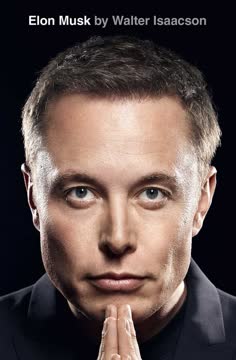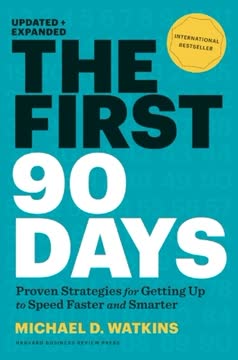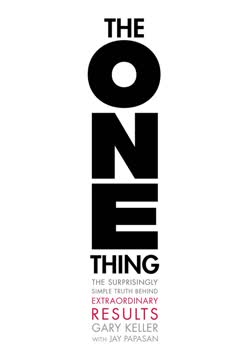Key Takeaways
1. Master the OPEN UP! Formula for Exceptional Presenting
OPEN UP! is an acronym representing the six characteristics shared by exceptional presenters.
The OPEN UP! formula is a comprehensive approach to becoming an exceptional presenter:
- Organized: Structure your message clearly and logically
- Passionate: Exude enthusiasm and conviction
- Engaging: Build rapport and involve the audience
- Natural: Develop a conversational and authentic style
- Understand Your Audience: Research and tailor your message
- Practice: Refine your skills through consistent repetition
By mastering these six elements, presenters can significantly improve their effectiveness and impact. This formula provides a framework for preparation, delivery, and audience connection that can be applied to any presentation scenario.
2. Harness the Power of Non-Verbal Communication
Your non-verbal messages will override anything you say.
Body language speaks volumes. Non-verbal communication plays a crucial role in how your message is received:
- Posture: Stand tall with hands at your sides to project confidence
- Eye contact: Maintain 3-4 seconds of eye contact to engage individuals
- Gestures: Use specific, defined gestures to reinforce your points
- Facial expressions: Smile to create warmth and connection
Research shows that 55% of communication is non-verbal, 38% is vocal tone, and only 7% is the actual words spoken. By mastering non-verbal cues, presenters can significantly enhance their credibility, engagement, and overall effectiveness.
3. Structure Your Presentation for Maximum Impact
If you tell people what they are about to hear, they are more likely to hear it.
A clear structure enhances retention. Use the following framework to organize your presentation:
- Purpose statement: Define the key takeaway
- Objective: Outline the agenda
- Position/Situation: Describe the current state
- End Result/Benefits: Highlight the implications
- Next Step/Action Plan: Provide clear direction
This structure helps audiences follow your message and remember key points. Additionally, consider using attention-grabbing openings such as relevant quotes, statistics, or stories to immediately engage your audience and set the tone for your presentation.
4. Engage Your Audience Through Connection and Interaction
If you fail to show a genuine interest in your audience, why should they be interested in you or your message?
Audience engagement is crucial. To keep your audience interested and involved:
- Use names and personal examples
- Ask questions and encourage participation
- Incorporate current events and relevant periodicals
- Tell stories and use humor appropriately
- Read audience body language and adjust accordingly
Remember that the average adult attention span is only 15-30 seconds. By consistently re-engaging your audience through these techniques, you can maintain their focus and interest throughout your presentation.
5. Develop a Natural and Conversational Delivery Style
Natural presenters are fluid, their eye contact is engaging, and their voice is easy to listen to.
Authenticity resonates with audiences. To develop a more natural style:
- Avoid reading scripts verbatim
- Practice speaking in a conversational tone
- Use language that feels comfortable and authentic to you
- Incorporate personal stories and experiences
- Allow for spontaneity and flexibility in your delivery
A natural delivery style helps build trust and rapport with your audience. It makes you appear more confident, knowledgeable, and relatable, which in turn makes your message more persuasive and memorable.
6. Know Your Audience Inside and Out
The quickest way to connect with an audience is by demonstrating that you understand their business, their issues and their concerns.
Research is key to relevance. To understand your audience:
- Study their organization, industry, and competitors
- Learn about their challenges, goals, and values
- Ask questions about their expectations and needs
- Review relevant news and publications
- Tailor your message to their specific context
By demonstrating a deep understanding of your audience, you can create a more targeted, relevant, and impactful presentation. This knowledge allows you to speak directly to their needs and concerns, increasing the likelihood of a positive reception.
7. Practice Relentlessly to Achieve Excellence
Those who practice improve. Those who don't, don't.
Consistent practice leads to mastery. To improve your presentation skills:
- Record and critique your presentations
- Conduct mock Q&A sessions
- Practice in everyday conversations
- Use a weekly practice chart to track progress
- Seek feedback from trusted colleagues or mentors
Top performers in various fields, from athletes to musicians, dedicate significant time to practice. The same principle applies to presenting. By making practice a habit, you can develop muscle memory for effective delivery techniques and build confidence in your abilities.
8. Conduct Effective Q&A Sessions with Confidence
The credibility of a presenter can rise or fall during Q&A.
Q&A sessions require preparation and poise. To excel in Q&A:
- Anticipate potential questions and practice responses
- Maintain composure and strong body language
- Listen carefully and clarify questions when necessary
- Use techniques like pausing or rephrasing to buy thinking time
- Be honest if you don't know an answer, and follow up later
Q&A sessions are opportunities to further engage your audience and demonstrate your expertise. By handling questions professionally and confidently, you can reinforce your credibility and leave a lasting positive impression.
9. Eliminate Verbal Graffiti for Clearer Communication
Clearly, filler um adds like nothing to our effectiveness, you know what I mean?
Clean speech enhances credibility. To eliminate verbal graffiti:
- Identify your common filler words (um, uh, like, you know)
- Practice pausing instead of using fillers
- Record yourself and review for verbal graffiti
- Eliminate qualifiers that weaken your message
- Be aware of condescending phrases (OK?, right?, see?)
By removing verbal graffiti, your message becomes clearer and more impactful. It demonstrates confidence and professionalism, allowing your audience to focus on your content rather than being distracted by unnecessary words.
10. Use Vocal Dynamics to Enhance Your Message
If you don't sound interested, why should I be interested?
Your voice is a powerful tool. To improve your vocal delivery:
- Vary your volume for emphasis
- Use inflection to convey emotion and importance
- Adjust your pace to maintain interest and clarity
- Practice articulation and enunciation
- Use strategic pauses for impact
A dynamic voice can captivate an audience and make your message more memorable. By mastering vocal techniques, you can add depth, emotion, and persuasiveness to your presentations, keeping your audience engaged and receptive to your ideas.
Last updated:
FAQ
What's "The Exceptional Presenter" about?
- Purpose and Focus: "The Exceptional Presenter" by Timothy J. Koegel is a guide to mastering presentation skills, aiming to help individuals present themselves and their ideas at an exceptional level.
- Structured Approach: The book breaks down the art of presenting into a series of skills and provides a systematic approach to mastering each one.
- Practical Techniques: It includes stories, examples, bullet points, exercises, performance tracking, note pages, and practice charts to aid learning.
- Audience Engagement: The book emphasizes the importance of consistently exceeding an audience’s expectations and using the book as a coach or mentor.
Why should I read "The Exceptional Presenter"?
- Improve Presentation Skills: It offers a proven formula to enhance your communication skills, which are crucial in both professional and personal settings.
- Career Advancement: Exceptional presentation skills can significantly impact your career trajectory, income, and reputation.
- Comprehensive Guide: The book provides practical advice and techniques that are applicable to any audience and venue.
- Personal Growth: By following the book's guidance, you can build confidence and become more effective in various communication scenarios.
What are the key takeaways of "The Exceptional Presenter"?
- OPEN UP! Framework: The book introduces the OPEN UP! framework, which stands for Organized, Passionate, Engaging, Natural, Understand Your Audience, and Practice.
- Practice is Essential: A central theme is that practice is crucial for improvement; those who practice improve, and those who don’t, don’t.
- Audience Connection: Engaging with your audience and understanding their needs is vital for a successful presentation.
- Non-Verbal Communication: The book highlights the importance of non-verbal cues, such as posture and gestures, in conveying confidence and passion.
What is the OPEN UP! framework in "The Exceptional Presenter"?
- Organized: Exceptional presenters are well-prepared, with a clear structure and purpose for their presentation.
- Passionate: They exude enthusiasm and conviction, making their message more persuasive and memorable.
- Engaging: They connect with their audience, building rapport and involving them in the presentation.
- Natural: Their delivery is conversational and fluid, making them appear confident and at ease.
How does "The Exceptional Presenter" suggest handling nervousness?
- Channel Nervous Energy: Convert nervous energy into positive energy by using it to enhance your gestures and voice projection.
- Preparation and Practice: Rehearse your presentation multiple times, especially the first two minutes, to build confidence.
- Focus on the Message: Shift the focus from yourself to the importance of your message and how it benefits the audience.
- Visualization and Breathing: Visualize a successful presentation and practice deep breathing to calm nerves.
What are some best quotes from "The Exceptional Presenter" and what do they mean?
- "Those who practice improve. Those who don’t, don’t." This quote emphasizes the importance of practice in mastering presentation skills.
- "Every contact counts. Every interview counts. Every presentation counts." It highlights the significance of every communication opportunity in building your reputation and effectiveness.
- "Do not accept average when you can be exceptional." This encourages readers to strive for excellence in their presentation skills rather than settling for mediocrity.
- "The tone of the presentation is set before the presentation begins." This underscores the importance of first impressions and preparation.
How does "The Exceptional Presenter" define an exceptional presenter?
- Characteristics: An exceptional presenter is organized, passionate, engaging, and natural in their delivery.
- Audience Connection: They understand their audience and tailor their message to meet the audience's needs and interests.
- Confidence and Poise: They exude confidence and maintain composure, even under pressure.
- Continuous Improvement: They are committed to practicing and refining their skills to maintain a competitive edge.
What role does non-verbal communication play according to "The Exceptional Presenter"?
- First Impressions: Non-verbal cues, such as posture and eye contact, are crucial in making a positive first impression.
- Congruence with Message: Non-verbal communication should support and enhance the spoken message, not contradict it.
- Engagement and Confidence: Effective use of gestures and facial expressions can make a presenter appear more engaging and confident.
- Audience Perception: Non-verbal signals can influence how the audience perceives the presenter's expertise and trustworthiness.
How does "The Exceptional Presenter" suggest structuring a presentation?
- Five Components: The book recommends structuring a presentation with a clear purpose, objective, position, end result, and next steps.
- Attention-Grabbing Openings: Start with a strong opening to capture the audience's attention and set the tone for the presentation.
- Clear Transitions: Use smooth transitions between segments to maintain the flow and coherence of the presentation.
- Purpose Statement: End with a purpose statement to reinforce the key message and ensure it is memorable.
What are some practical tips from "The Exceptional Presenter" for engaging an audience?
- Use Stories and Examples: Incorporate stories and anecdotes to make the presentation relatable and memorable.
- Eye Contact and Smiling: Maintain eye contact and smile to build rapport and connect with the audience.
- Involve the Audience: Encourage participation through questions, discussions, and interactive elements.
- Adapt to Feedback: Be attentive to audience reactions and adjust your delivery accordingly to maintain engagement.
How does "The Exceptional Presenter" recommend handling Q&A sessions?
- Maintain Composure: Stay calm and composed, even when faced with challenging questions.
- Understand the Question: Ensure you fully understand the question before responding, and ask for clarification if needed.
- Involve the Audience: Repeat the question for the benefit of the entire audience and engage them in the response.
- Practice and Anticipate: Rehearse potential questions and answers to be better prepared for the Q&A session.
What is the significance of practice in "The Exceptional Presenter"?
- Habit Formation: Practice helps in forming habits, making skills second nature and reliable under pressure.
- Daily Opportunities: The book encourages using daily interactions as practice opportunities to refine presentation skills.
- Repetition and Improvement: Regular practice leads to improvement and helps in eliminating bad habits.
- Commitment to Excellence: Practicing consistently is key to achieving and maintaining exceptional presentation skills.
Review Summary
The Exceptional Presenter receives mostly positive reviews, with an average rating of 3.66/5. Readers appreciate its practical advice, straightforward approach, and actionable tips for improving presentation skills. Many find it helpful for both beginners and experienced presenters. The book is praised for its concise format and useful worksheets. Some criticisms include its focus on business presentations, lack of addressing performance anxiety, and repetitive use of the word "exceptional." Overall, readers find it a valuable resource for enhancing public speaking abilities.
Similar Books










Download PDF
Download EPUB
.epub digital book format is ideal for reading ebooks on phones, tablets, and e-readers.




